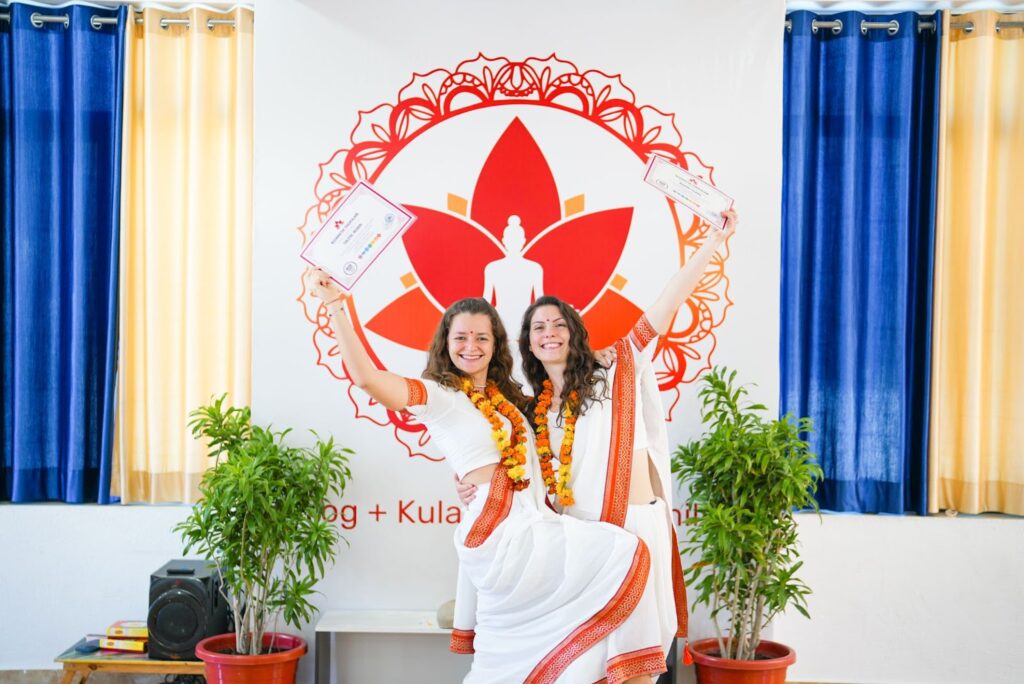Introduction to Yoga Teacher Training (YTT)
Embarking on a yoga teacher training (YTT) journey is a transformative experience. Whether your goal is to deepen your personal practice or step into a teaching role, choosing the best yoga teacher training program is a decision that will shape your entire yoga path. With hundreds of programs around the world, figuring out how to choose a yoga teacher training program that fits your needs can feel overwhelming—but with the right guidance, it doesn’t have to be.
Types of Yoga Teacher Training Programs
200 hour, 300 hour, and 500 hour Programs Explained
Yoga teacher training typically comes in three main formats:
- 200 hour YTT: The foundational course, ideal for beginners.
- 300 hour YTT: For those who’ve completed the 200 hour course and want to deepen their studies.
- 500 hour YTT: A comprehensive course combining both 200 and 300 hours.
Online vs In-Person YTT
Since the pandemic, online YTTs have surged in popularity. Online programs offer convenience and flexibility, but in-person training often provides richer interaction and deeper immersion.
Intensive vs Extended Duration Formats
- Intensive: 3–5 weeks of daily, full-time study.
- Extended: Weekend-only programs spread over several months—ideal for working professionals.
Certification and Accreditation Essentials
Yoga Alliance Certification
Choosing a Yoga Alliance-certified school ensures your training meets international standards. It also means you can register as a Registered Yoga Teacher (RYT), enhancing your credibility and employability.
Global Recognition
Some countries or studios require Yoga Alliance credentials, so check local requirements if you plan to teach abroad.
Defining Your Yoga Goals
Personal Growth vs Professional Teaching
Are you pursuing YTT to teach or to deepen your own practice? Answering this question helps narrow your search. Not all programs are equally focused on pedagogy.
Choosing Your Yoga Style
Each style of yoga offers unique experiences. Some popular choices include:
- Hatha: Traditional and gentle
- Vinyasa: Dynamic and flow-based
- Ashtanga: Structured and athletic
Align the program with your preferred practice style.
Reputation and Credibility of the School
How to Research Programs
Use platforms like Yoga Alliance’s directory or YogaTrade to verify credentials. Look for programs with a consistent history, updated curriculum, and strong alumni feedback.
Warning Signs
Avoid programs that:
- Lack transparency
- Make exaggerated promises
- Don’t list their lead instructors
Experience and Credentials of the Instructors
What to Look For
- Minimum of 5 years teaching experience
- Yoga Alliance ERYT-200 or ERYT-500 credentials
- Background in anatomy, philosophy, and teaching methodology
A diverse faculty usually enriches the learning experience.
Curriculum Breakdown and Focus
Ensure the program covers:
- Yoga philosophy
- Anatomy and physiology
- Practicum (teaching practice)
- Sequencing and adjustments
Some schools also incorporate Ayurveda, pranayama, or meditation, which can offer a more holistic foundation.
Class Size and Learning Environment
Smaller classes typically allow:
- More personal feedback
- Closer student-teacher interaction
- Better opportunities for practical teaching
Large groups may dilute the experience, especially in hands-on practices.
Location and Setting of the Program
City vs Nature Retreats
- City programs: Great for convenience, usually more budget-friendly.
- Retreat settings: Offer spiritual ambiance, nature immersion, and full concentration—but may involve travel and higher costs.
Tuition, Scholarships, and Hidden Costs
Typical 200-hour YTT costs range from $1,500 to $4,000, depending on the location and format.
Always ask about:
- Accommodation and meals
- Textbooks or supplies
- Certification or registration fees
Some schools offer early-bird discounts or scholarships.
Schedule Flexibility and Time Commitment
Evaluate:
- Can you commit to a full-time immersive course?
- Do you need weekend-only sessions?
- Does the program require pre-study or homework?
Make sure the format fits your lifestyle.
Cultural Immersion and Spiritual Aspects
Training in traditional settings like Rishikesh, India offers cultural depth and spiritual immersion. But consider language barriers and your comfort level with international travel.
Safety and Health Considerations
Make sure the training location offers:
- Access to healthcare
- Clean accommodations
Also consider the emotional intensity of YTT, which may bring up buried experiences.
Reviews, Alumni Feedback & Social Proof
Before enrolling, connect with former students via:
- Social media groups
- School directories
- Online forums
Their experiences can provide unfiltered insights.
Creating a Comparison Checklist
| Criteria | Program A | Program B |
| Yoga Alliance Certified? | ✅ | ❌ |
| Cost (all inclusive) | $2,500 | $3,200 |
| Lead Trainer Experience | 10 years | 3 years |
| Style Focus | Hatha & Vinyasa | Vinyasa only |
Create a checklist like this to compare top contenders.
Red Flags to Avoid in YTT Programs
- Rushed sign-up deadlines
- Lack of experienced faculty
- Unrealistic promises like “Guaranteed job placement”
Always read the fine print.
FAQs About Choosing a Yoga Teacher Training Program
1. How do I know if a YTT program is legitimate?
Check Yoga Alliance certification, faculty bios, and reviews from past students.
2. Is online YTT worth it?
Yes, if it’s interactive, well-structured, and Yoga Alliance-approved.
3. What’s the difference between 200, 300, and 500 hour training?
200-hour is foundational; 300-hour is advanced; 500-hour combines both for in-depth mastery.
4. Can I teach yoga right after completing a YTT?
Yes, after registering as an RYT, but ongoing practice and mentorship are recommended.
5. Is it better to do YTT in India?
Not necessarily. It depends on your goals, comfort with travel, and desired experience.
6. What should I pack for an in-person YTT retreat?
Yoga clothes, a notebook, reusable water bottle, mat, toiletries, and an open mind.
Final Thoughts and Conclusion
Choosing the best yoga teacher training program is about more than picking a popular school—it’s about aligning your personal goals, values, and learning style with the right curriculum and community. This journey will be a stepping stone into deeper self-awareness, personal transformation, and a lifelong connection to the yoga world.






